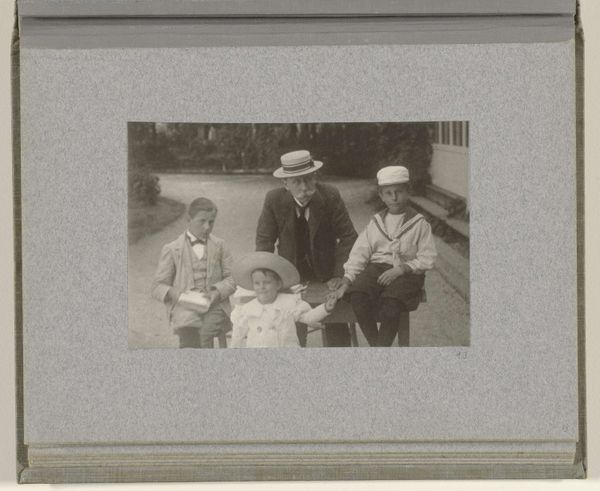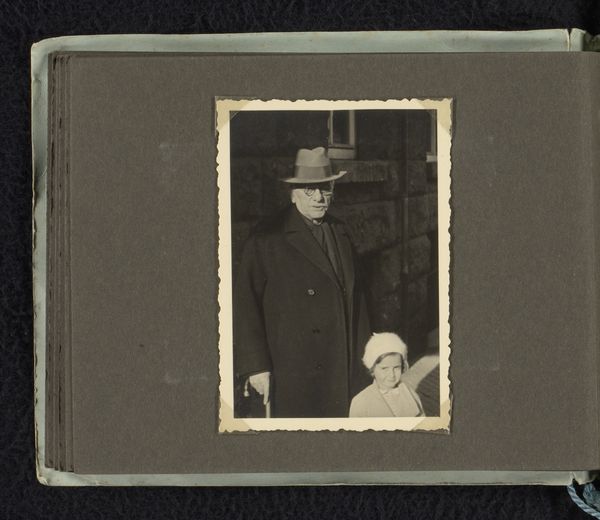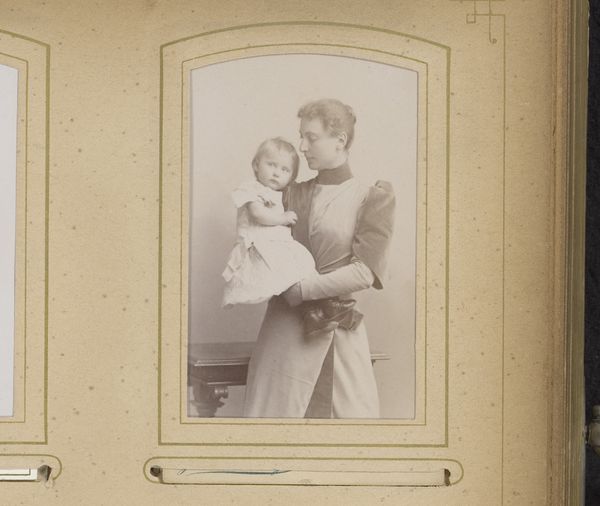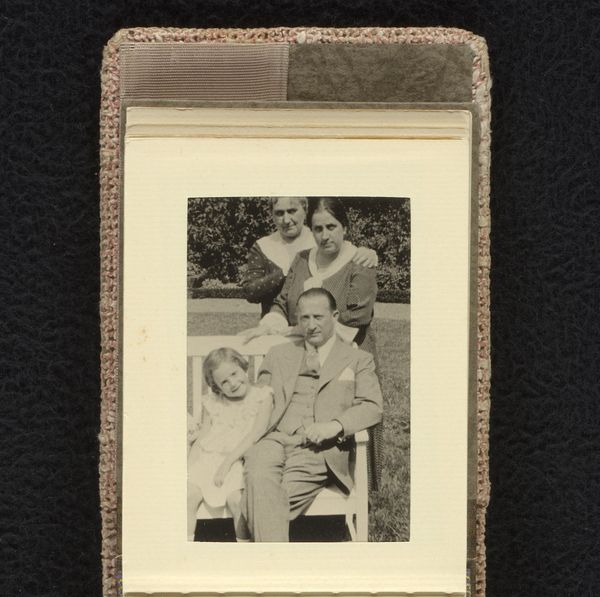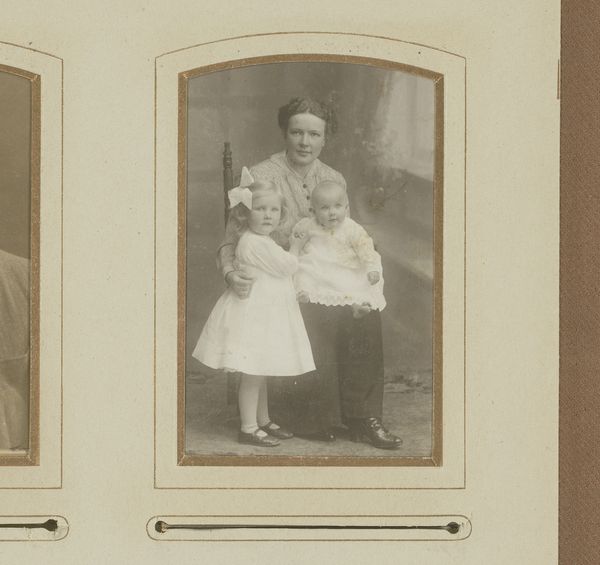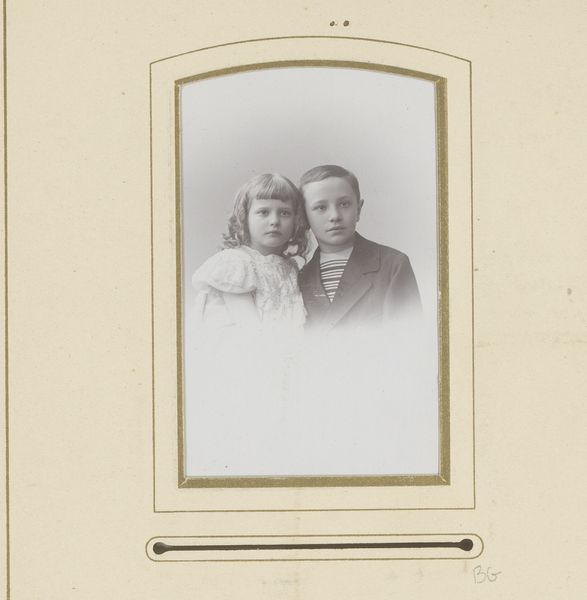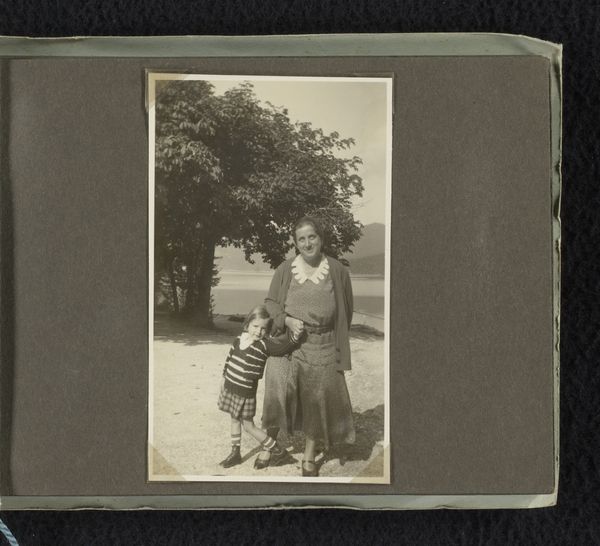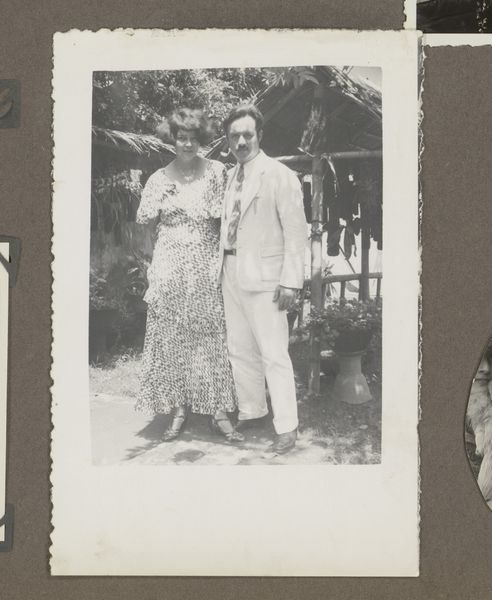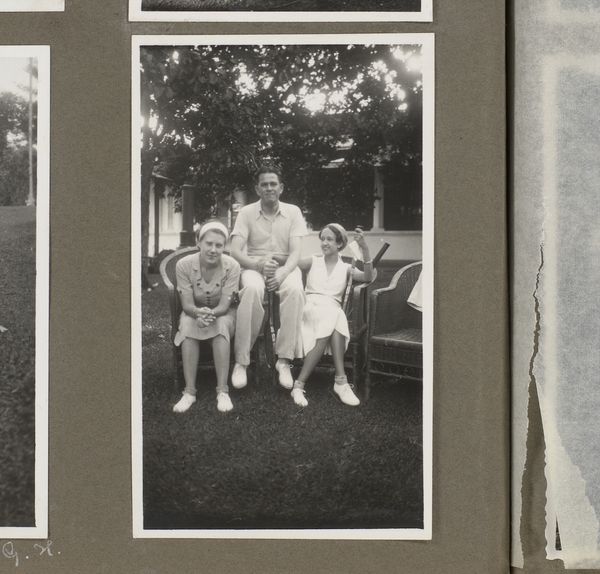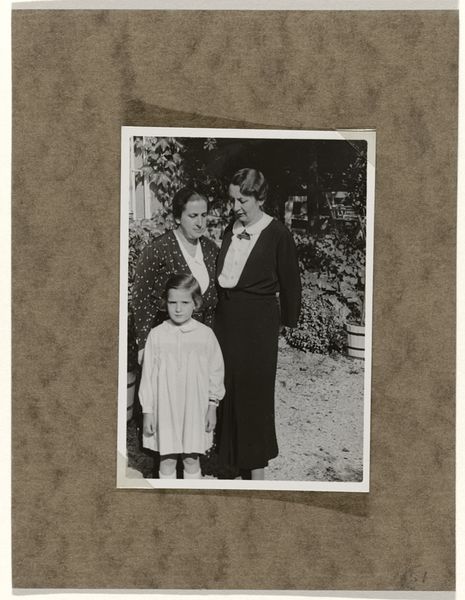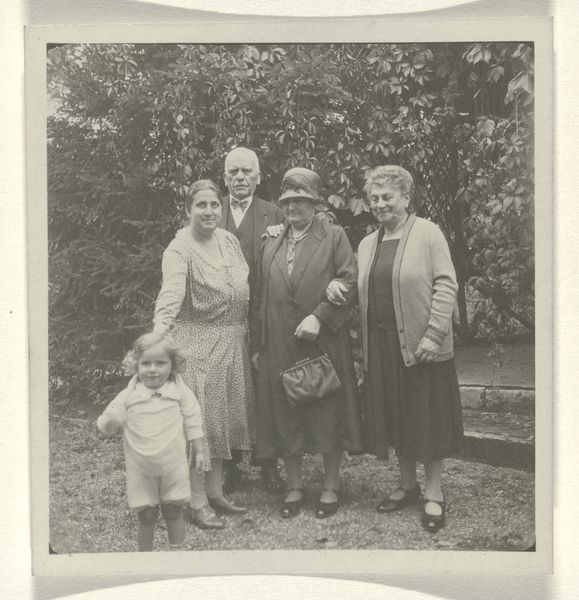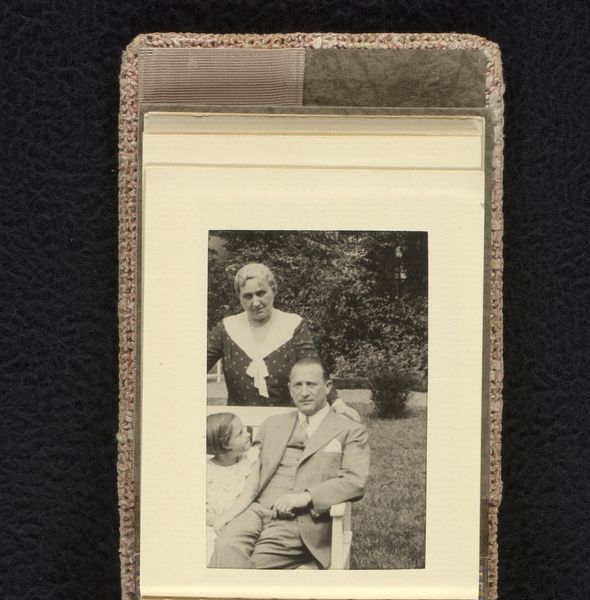
J.B. Aug. Kessler met naast zich twee van zijn kinderen voor de veranda, foudraal rechtsonder before 1900
0:00
0:00
photography
#
portrait
#
pictorialism
#
photography
#
genre-painting
Dimensions: height 112 mm, width 160 mm
Copyright: Rijks Museum: Open Domain
Editor: This is an albumen silver print from before 1900 depicting J.B. Aug. Kessler with two of his children, housed at the Rijksmuseum. The scene feels very posed, formal even. What kind of social dynamics are at play here? Curator: This portrait captures a fascinating moment of societal expectations. The photographic style, typical of pictorialism, presents Kessler as the patriarch of his family, reinforcing social hierarchies prevalent at the time. Notice how the veranda becomes a stage for presenting the family's status and respectability. How do you think institutions influenced the ways these photographs were staged? Editor: I imagine there was pressure to emulate popular painting styles within photography at this time? It's also interesting to think about how wealth might determine the subject, posing, and even the location itself. Curator: Precisely. Kessler was part of a powerful family within Dutch society. These early photographic portraits acted as crucial markers of identity and legacy. The very act of commissioning and displaying such an image within the home reflected aspirations toward a specific class identity, especially as photography became increasingly accessible to the middle class. Does the location add meaning? Editor: I see the house in the background; it symbolizes a sense of established wealth. Is the image seeking to portray them a certain way? Curator: Absolutely. The choice of the setting is deliberate, underscoring a cultivated and stable environment. It signifies belonging to a particular societal stratum, reflecting the institutional role of photography in shaping and reinforcing perceptions of class and status. This adds layers to our understanding, doesn't it? Editor: It does. I had only seen a staged photograph, but I see now how institutions and social status were very influential in the setting of this portrait. Curator: Thinking about the image in terms of the institutional forces at play really enriches how we read photographs from this era.
Comments
No comments
Be the first to comment and join the conversation on the ultimate creative platform.
